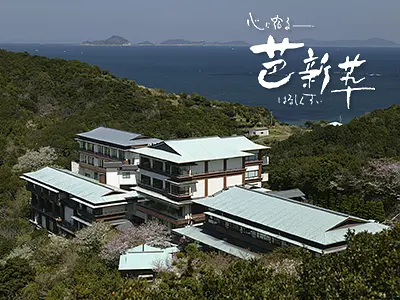熊野古道伊勢路・松本峠や、周辺エリアにある七里御浜、鬼ヶ城などの世界遺産を歩いて見て楽しむ旅!山登り初心者や、お子様連れでも安心して巡れるスポット&楽しみ方をご紹介
掲載日:2022.03.12
「松本峠」は、熊野古道伊勢路の中でも、標高135メートルと低めで、山登り初心者や小学生など小さいお子様連れでも安心して登れる峠。そして、「松本峠」をはじめとして、「七里御浜」「鬼ヶ城」など、世界遺産を一気に見て回ることができるのが「松本峠」周辺エリアの魅力。今回はそれぞれのスポットの行き方&楽しみ方についてご紹介します!
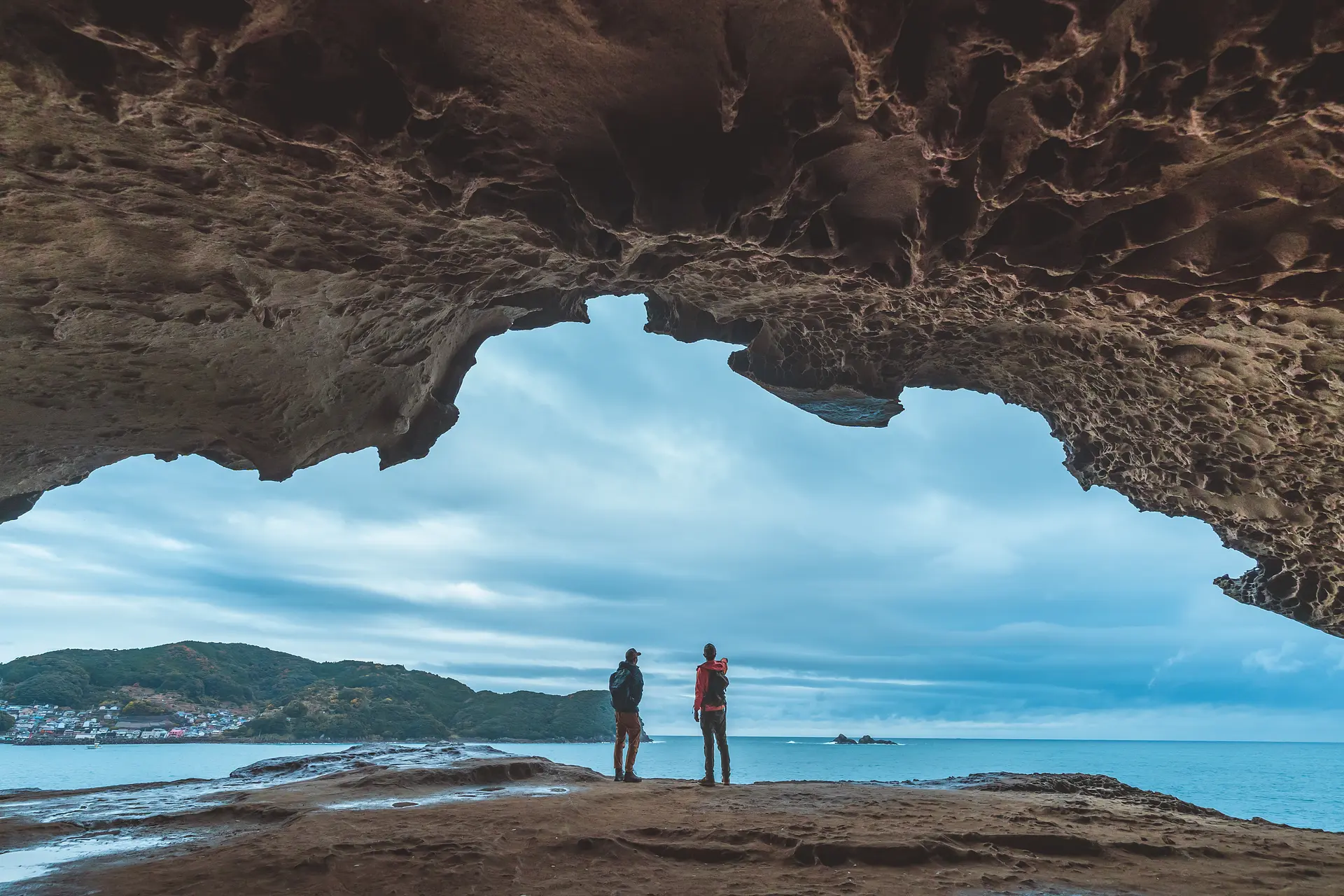
目次
- 1.鬼ヶ城センターから出発!
- 2.松本峠
- 松本峠登り口
- 洗い越し
- 江戸時代の石畳
- 明治時代の石畳と「マグロ騒動」
- 鉄砲傷の地蔵様
- 3.鬼ヶ城ハイキングコース
- 世界遺産・七里御浜を望む東屋
- 世界遺産・鬼ヶ城
- 4.温泉で、歩き疲れた体を癒そう
- 湯ノ口温泉
- 入鹿温泉 ホテル瀞流荘
- 熊野の宿 海ひかり
1.鬼ヶ城センターから出発!
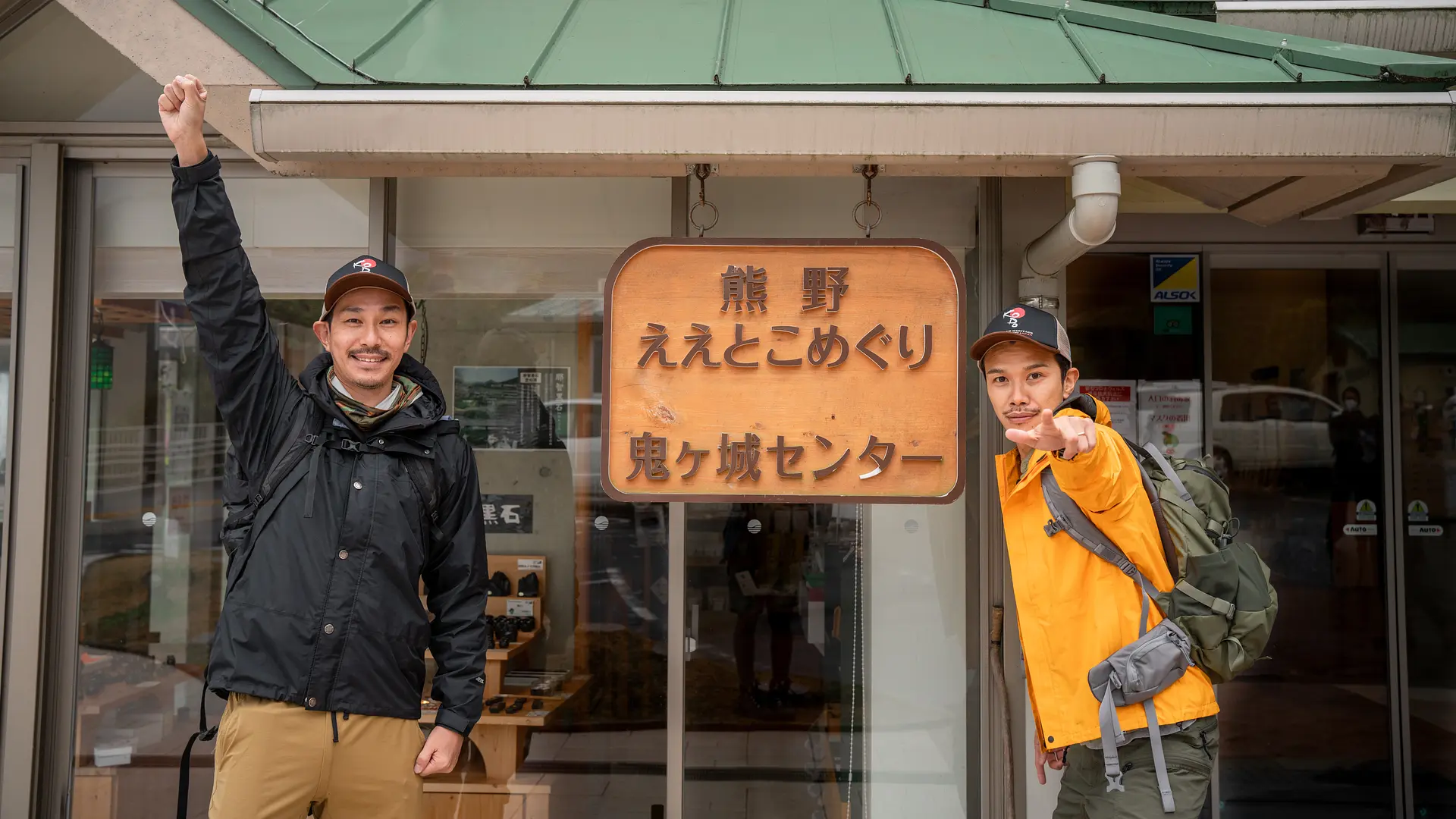
今回、松本峠や周辺エリアの魅力を紹介してくれるのは、人気YouTuber「ビートないとー」さんと「のりごとー」さん(※お二人のプロフィールはリンクをクリック)
二人は鬼ヶ城センターからスタートして、松本峠に向かいます。
※名古屋方面から鬼ヶ城センターまでのアクセス
・車の場合は、名古屋ICから熊野大泊(おおどまり)IC経由で到着(約2時間40分)
・JR名古屋駅から特急南紀号でJR熊野市駅(約3時間)にて降車し、熊野市駅より三重交通バスで「鬼ヶ城東口」下車すぐ(徒歩約3分)
※鬼ヶ城センターには無料駐車場(普通車70台分)があり、松本峠登り口の最寄りの駐車場として利用することができます!
※松本峠に入った後はトイレがありません。鬼ヶ城センター内もしくは駐車場にあるトイレですませておきましょう。

鬼ヶ城センターは、地元の土産物や特産品を取り揃えた売店、熊野地鶏や熊野鯛を使用した料理をいただける飲食店が入った施設。
鬼ヶ城を含む周辺スポットの観光パンフレットや、マップも手に入れられます。
※松本峠のウォーキングルートが載っている「熊野古道伊勢路ガイドマップ」が置かれていない場合もあります。お出かけ前に以下のどちらかのサイトからダウンロードしておきましょう。
○熊野古道伊勢路ウェブサイトからダウンロード
○一般社団法人東紀州地域振興公社ウェブサイトからダウンロード
それぞれのサイトには、熊野古道や周辺地域に関する便利な情報も掲載されているため、旅の前に是非チェックしてみてください。
2.松本峠
松本峠登り口
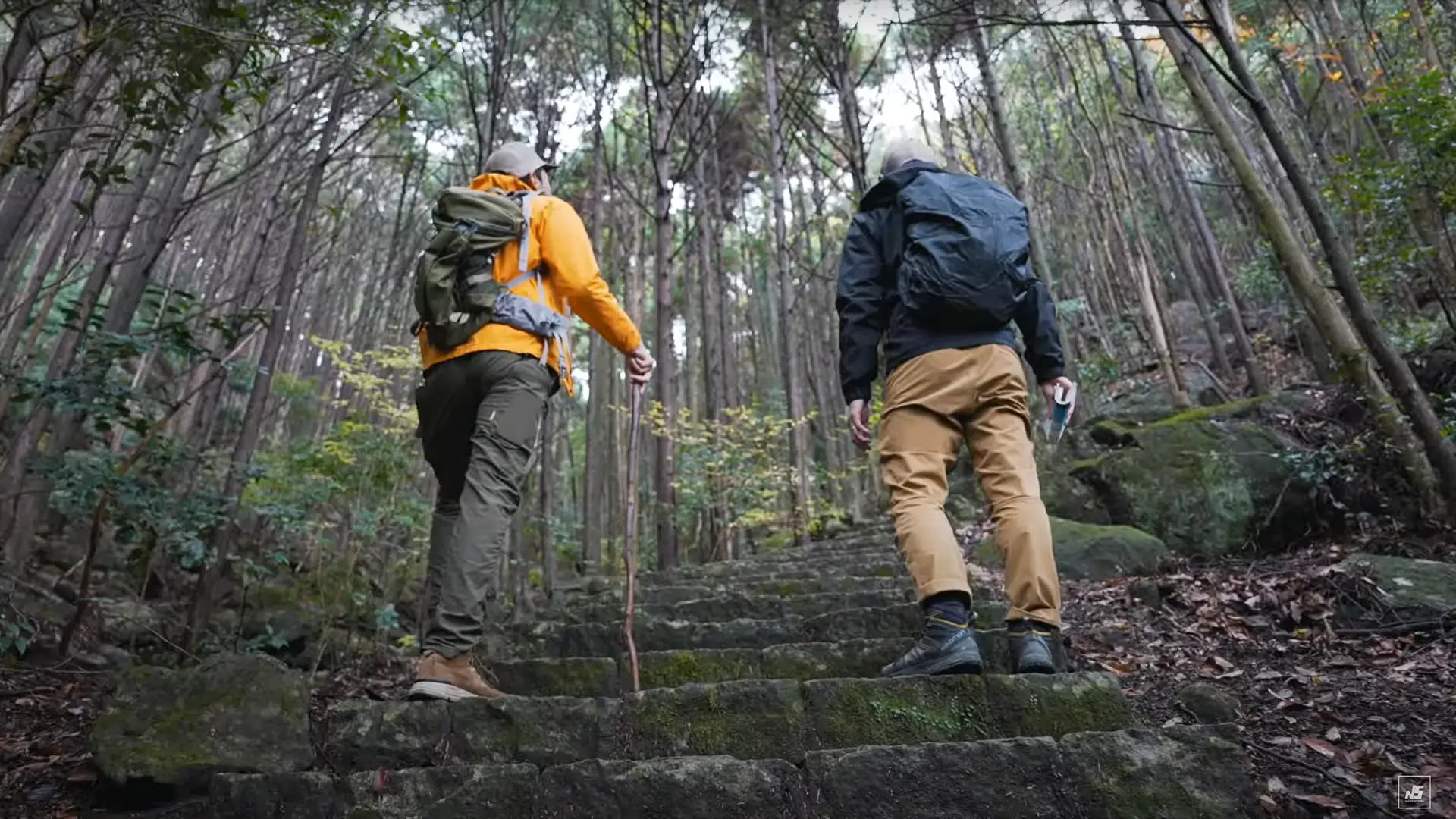
松本峠登り口は、鬼ヶ城センターから徒歩10分ほどの距離。熊野古道伊勢路の中でも、松本峠は標高が約135メートルと低めで、山登り初心者や、小学生くらいのお子さんなら登れるルートなんです。
そして、熊野古道は2004年に「紀伊山地の霊場と参詣道」の一部として世界遺産に登録された、伊勢神宮と熊野三山「熊野本宮大社・熊野速玉大社・熊野那智大社」とを結ぶ道。
歴史ある古道で、大正時代に登り口前の道や鬼ヶ城歩道トンネルが整備されるまでは、生活道路としても使われていたそう。人々の生活を支えた大切な道でもあるんですね。
※散策中は、こまめに水分補給や休憩を取りましょう!
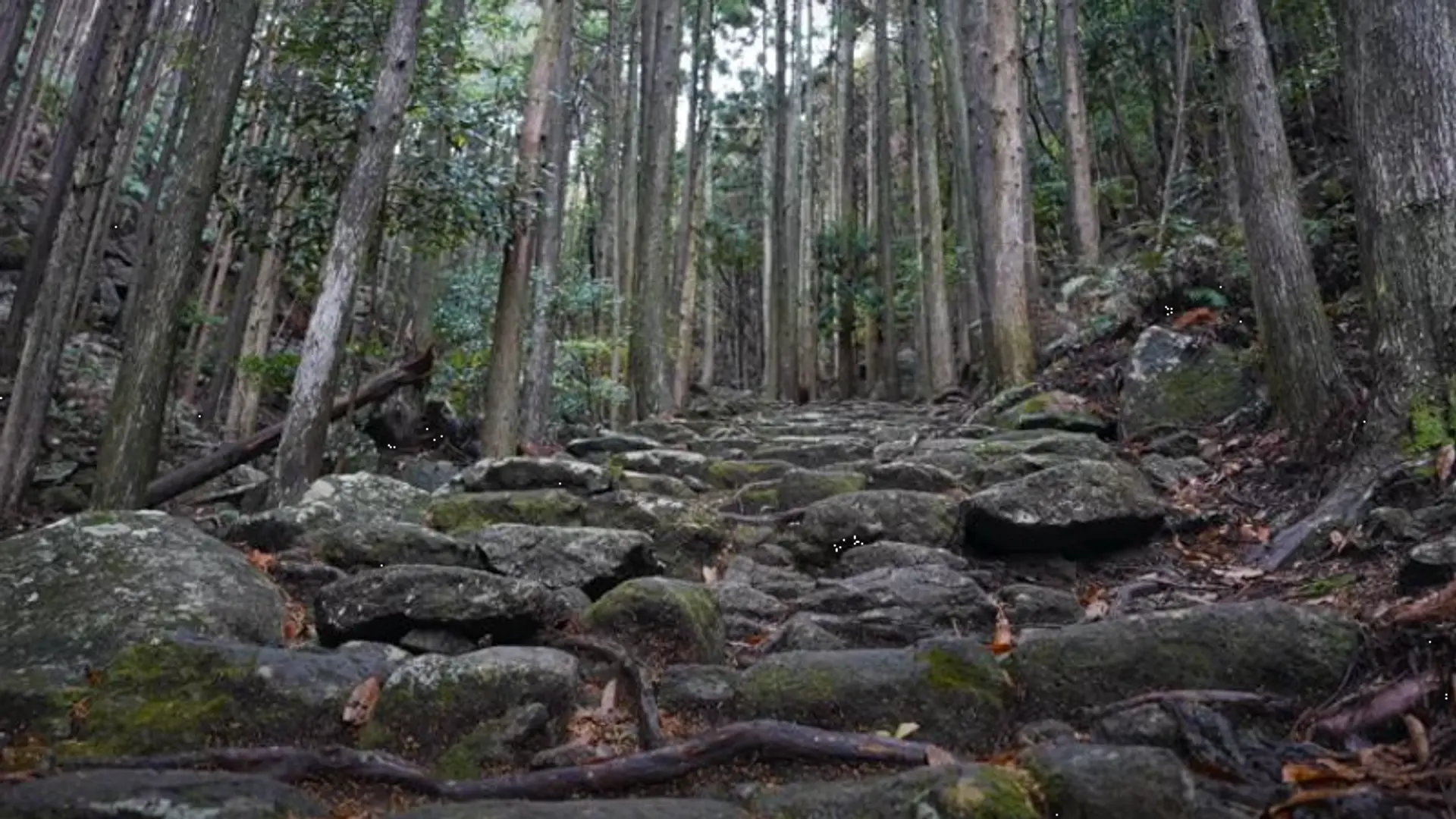
二人が松本峠を訪れた日の天気は、雨模様。あいにくの天気ですが、熊野古道には、雨の日だからこそ楽しめる美しい景色があります。雨に濡れた石畳は一段と艶やかに見え、湿った木々の根や葉などが香り、熊野古道の神秘的な雰囲気も高まります。
※雨の日や雨上がりは特に足元が滑りやすいため、トレッキングシューズなどを装備し、気を付けて歩きましょう!
洗い越し
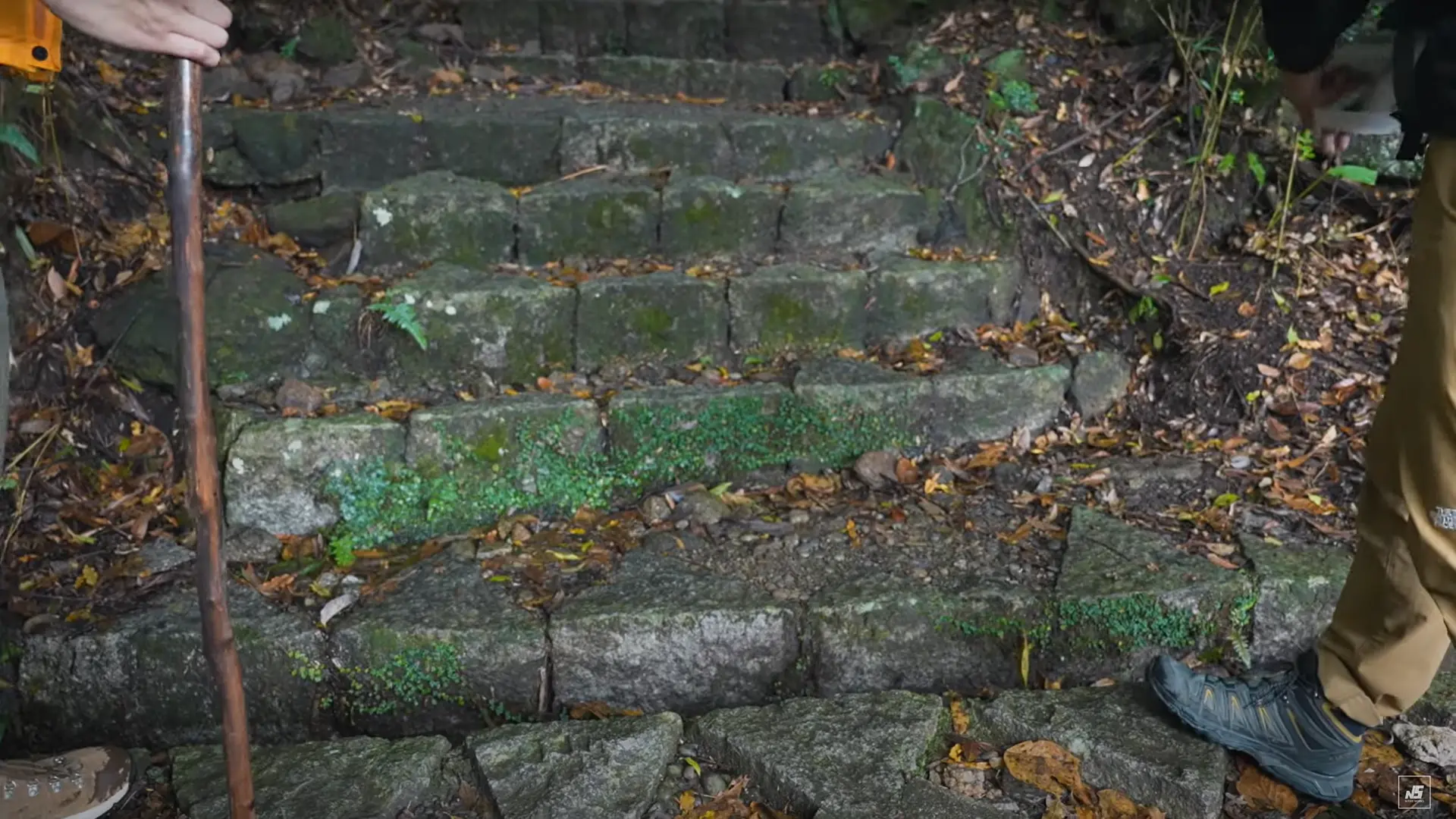
足元にある溝のようなものは、「洗い越し」という、熊野古道全体で共通してみられる工法。熊野古道のある東紀州地域は、全国でも有数の多雨地域のため、山の上から流れてくる雨水の勢いを弱めて道が崩れないように、谷側に流すように作られたものだそうです。
道を安全に保つための、多雨地域ならではの工夫が見て取れます。
江戸時代の石畳
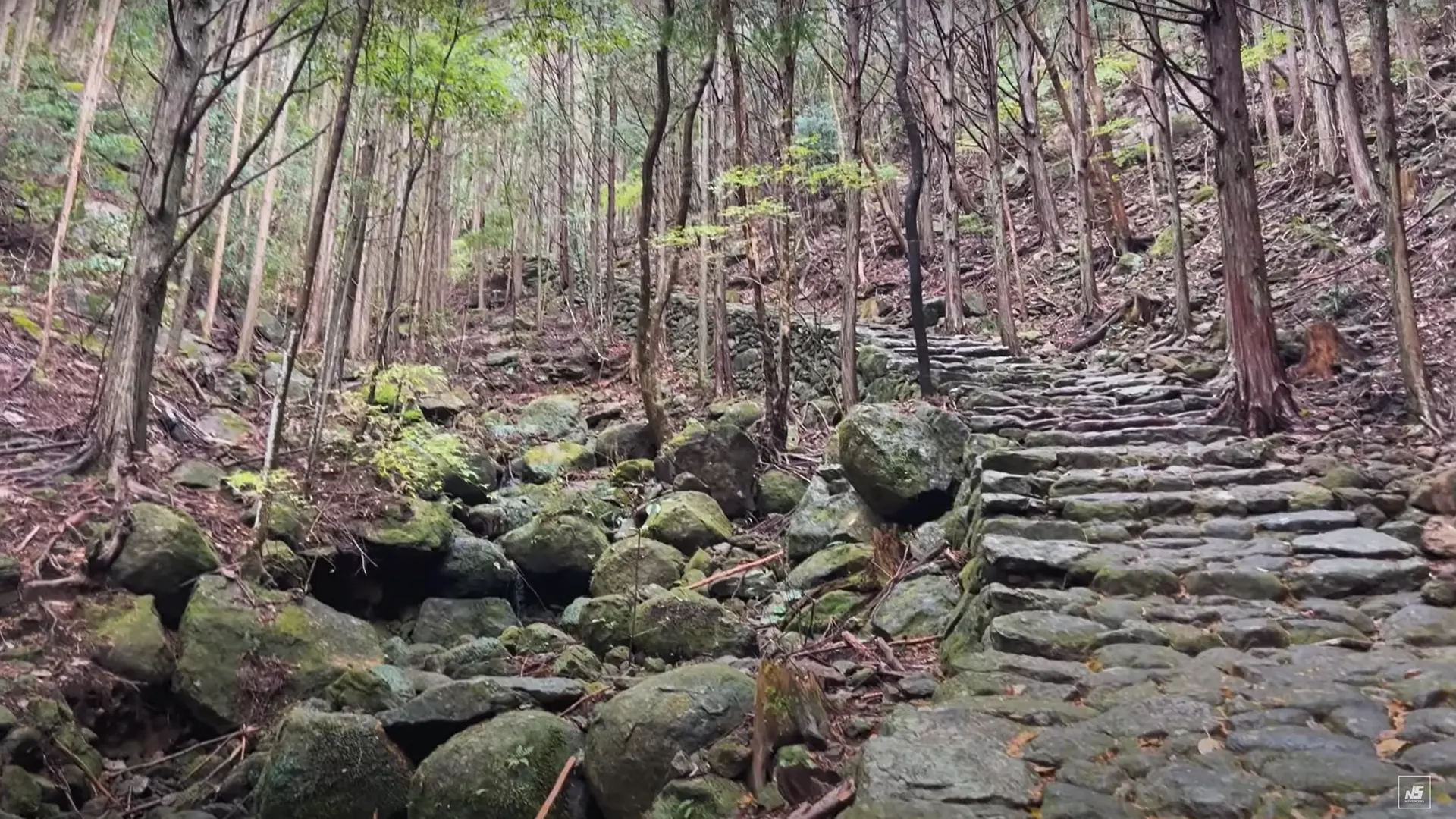
こちらは、江戸時代に敷かれた石畳。「野面(のづら)乱層積み」というもので、地震や豪雨に見舞われても崩れにくいよう、頑丈に作られています。ちなみに、「野面積み」というのは、山の石を切り削って石を積むことだそう。「野面乱層積み」の道の側面には、見事な石垣が積まれています。
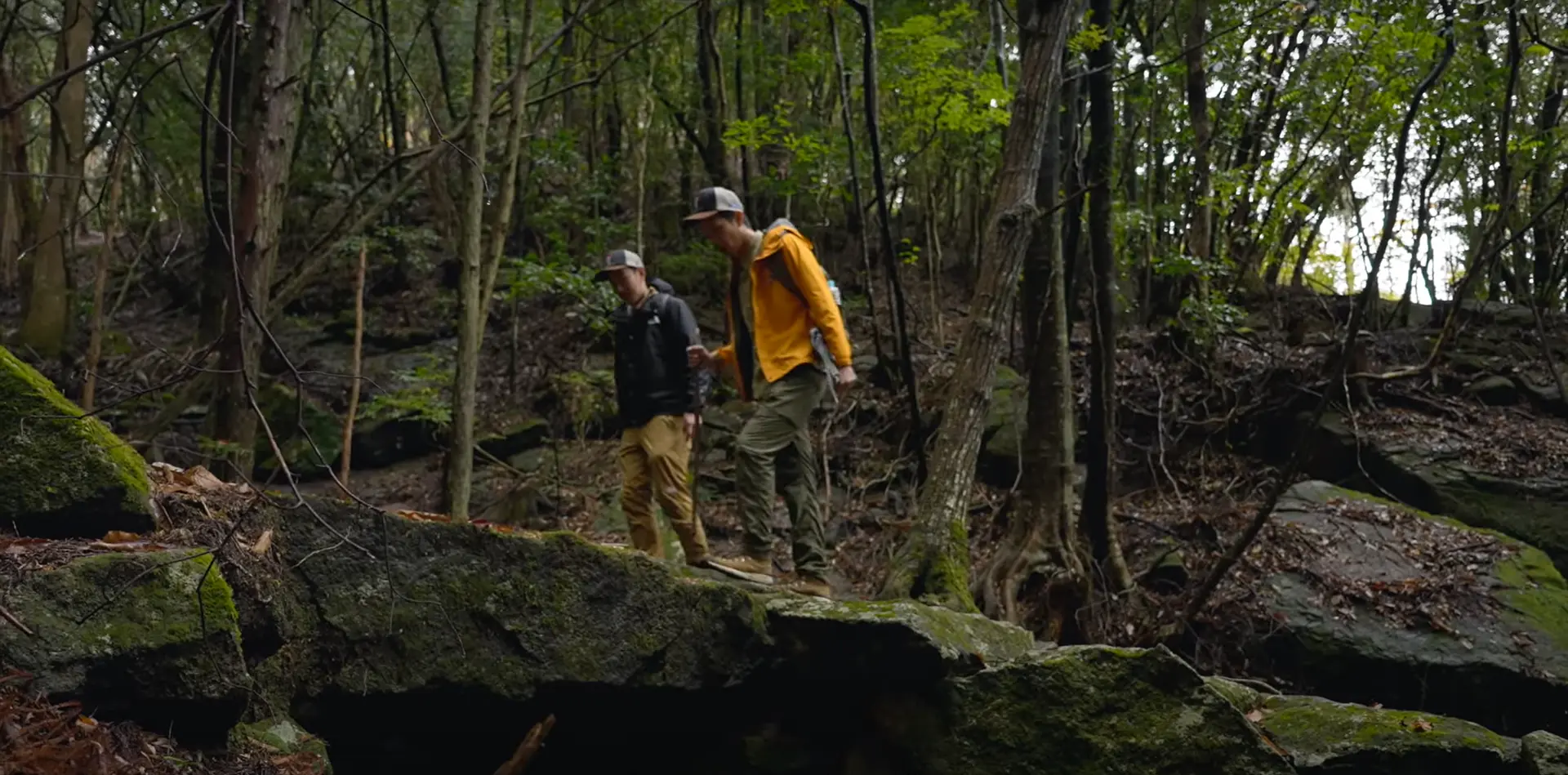
道の途中には、橋のように架けられた大きな一枚岩があります。熊野古道に敷かれている大小さまざまな石は、昔の人々がテコなどを使いながら人力で運んだそう。
「この大きさの石を、人が運んだのか…」と驚く二人。いったい何人の人が力を合わせれば運べるのでしょうか…?
明治時代の石畳と「マグロ騒動」
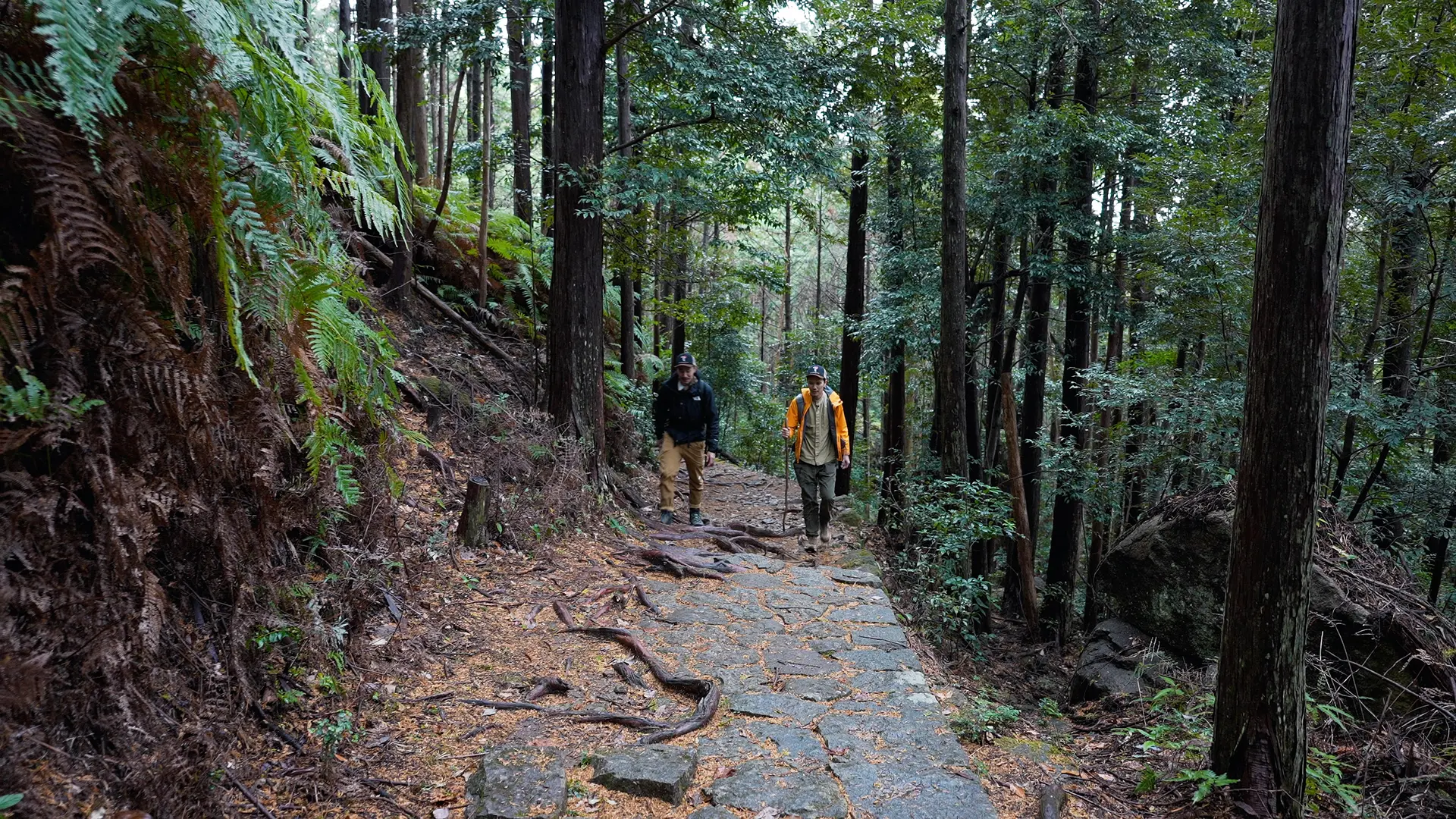
二人が歩いているのは、明治時代に敷かれた石畳。実は、この石畳まつわる面白いエピソードがあるんです。
明治元年、この付近で300本ほどのマグロが水揚げされた際、漁場を争った漁師たちが騒動を起こしてしまいました。代官所は騒動を起こした罰として、漁師たちに半年かけて石畳を作らせたとか。
鉄砲傷の地蔵様
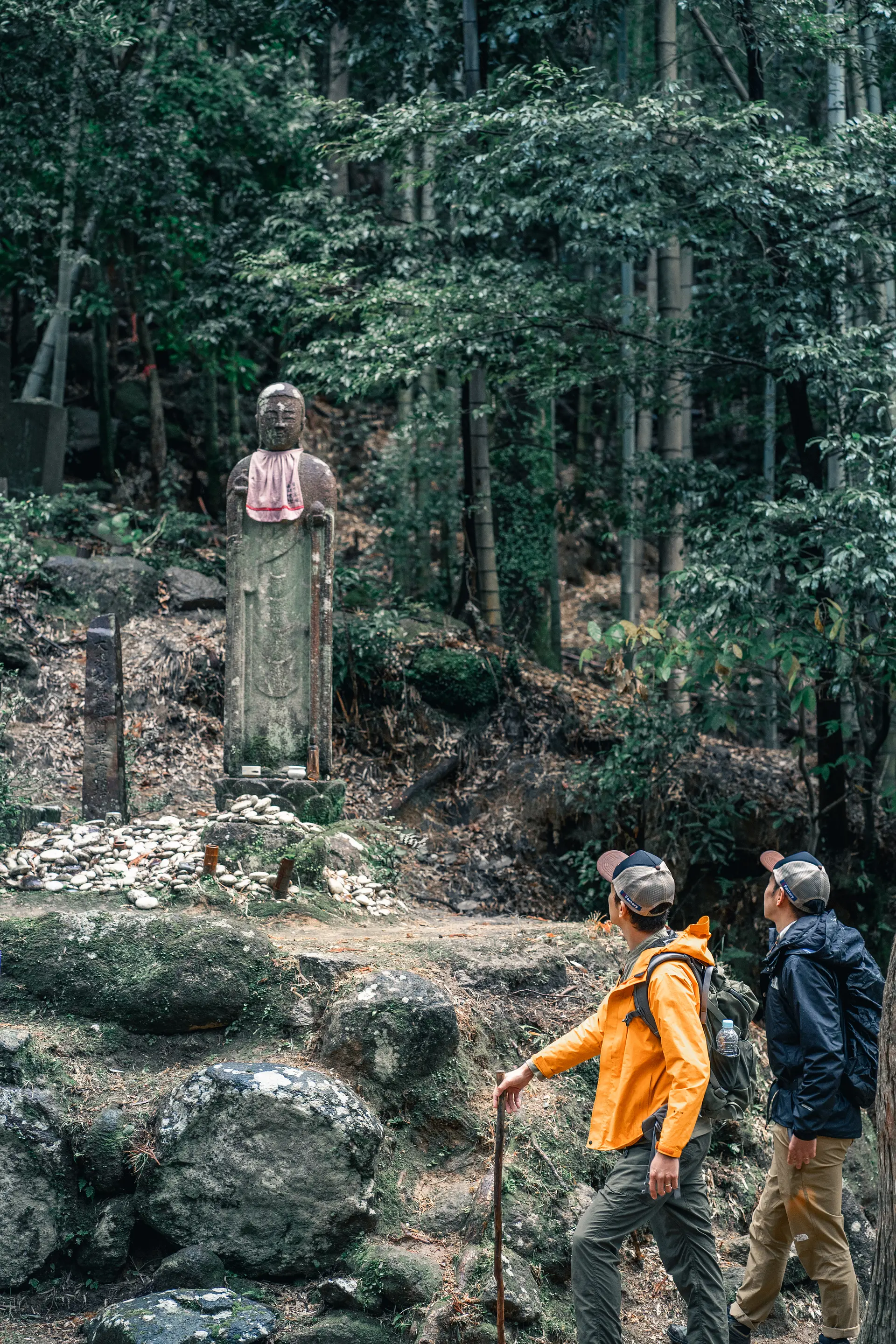
松本峠の頂上付近には、大きなお地蔵様が立っています。
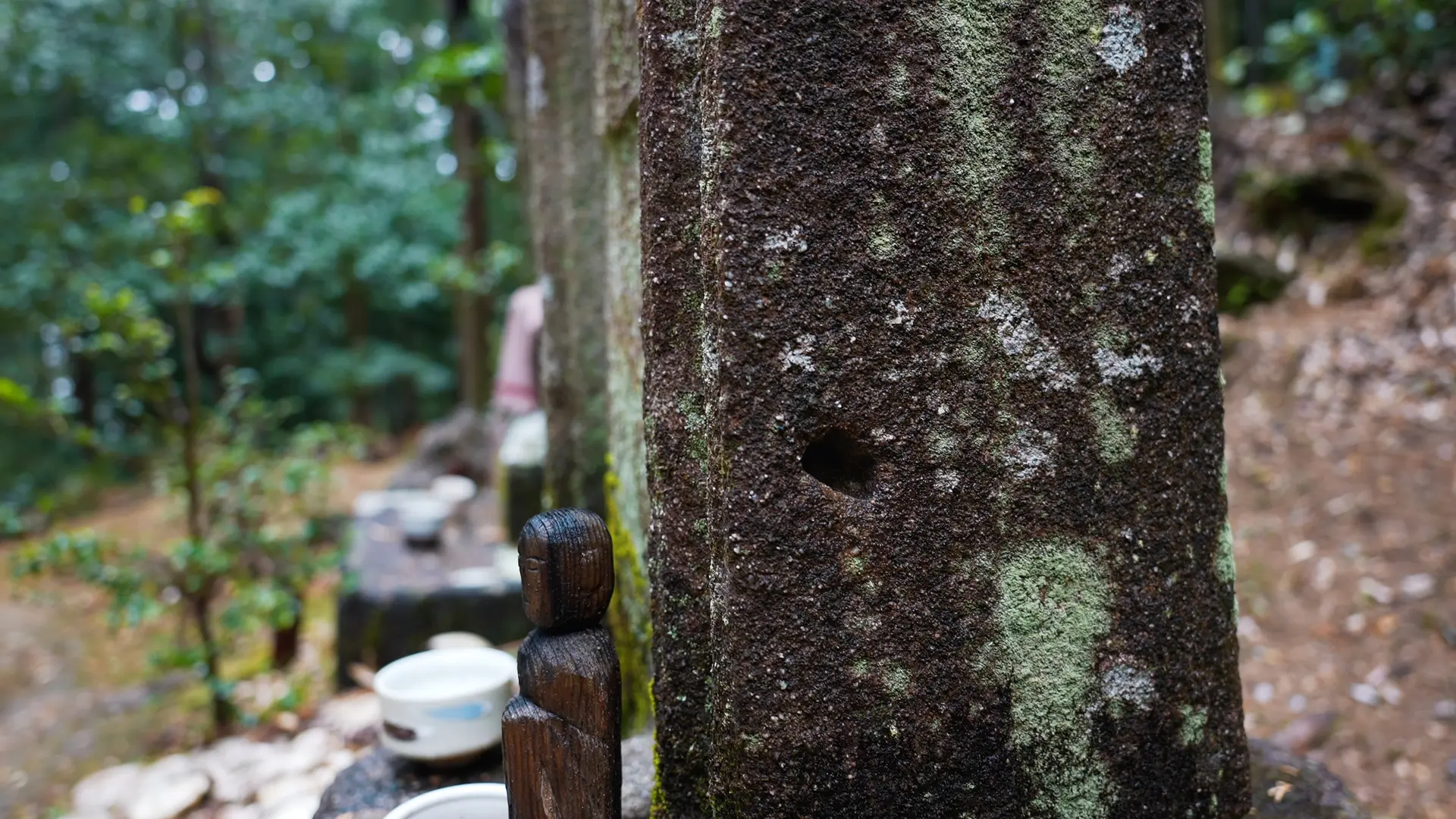
お地蔵様の足元には大きな穴が開いています。これは、元禄(1700年)の頃、鉄砲猟師の大馬新左衛門が夜中に峠を通った際、お地蔵様を、妖怪や獣と見間違えて撃ってしまって付いた鉄砲傷だそう。
↓臨場感ある360度動画はこちらから
優しい顔の大きな地蔵様の後ろには、青々とした竹林が広がっています。美しい景色に心が癒されます。
3.鬼ヶ城ハイキングコース
世界遺産・七里御浜を望む東屋
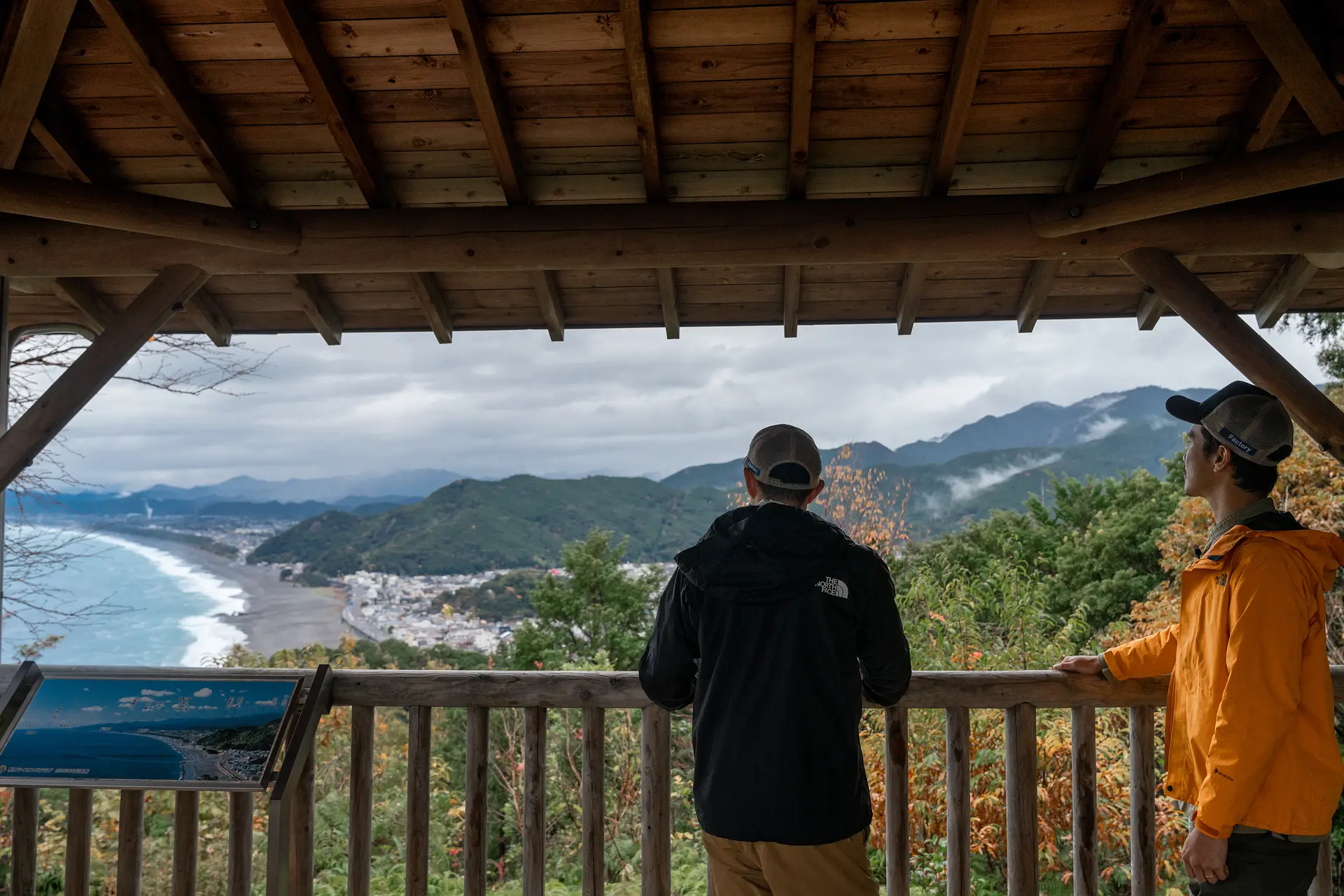
松本峠の頂上付近にある分かれ道から鬼ヶ城ハイキングコースに進み、200メートルほど歩くと東屋があります。
(分かれ道で松本峠の道順に沿って進むと、熊野市の街中へ抜けます)
東屋からは、世界遺産・七里御浜や海岸沿いの山々、熊野市街などを見渡すことができます。「いい眺め!」と、東屋からの雄大な景色を楽しむ二人。
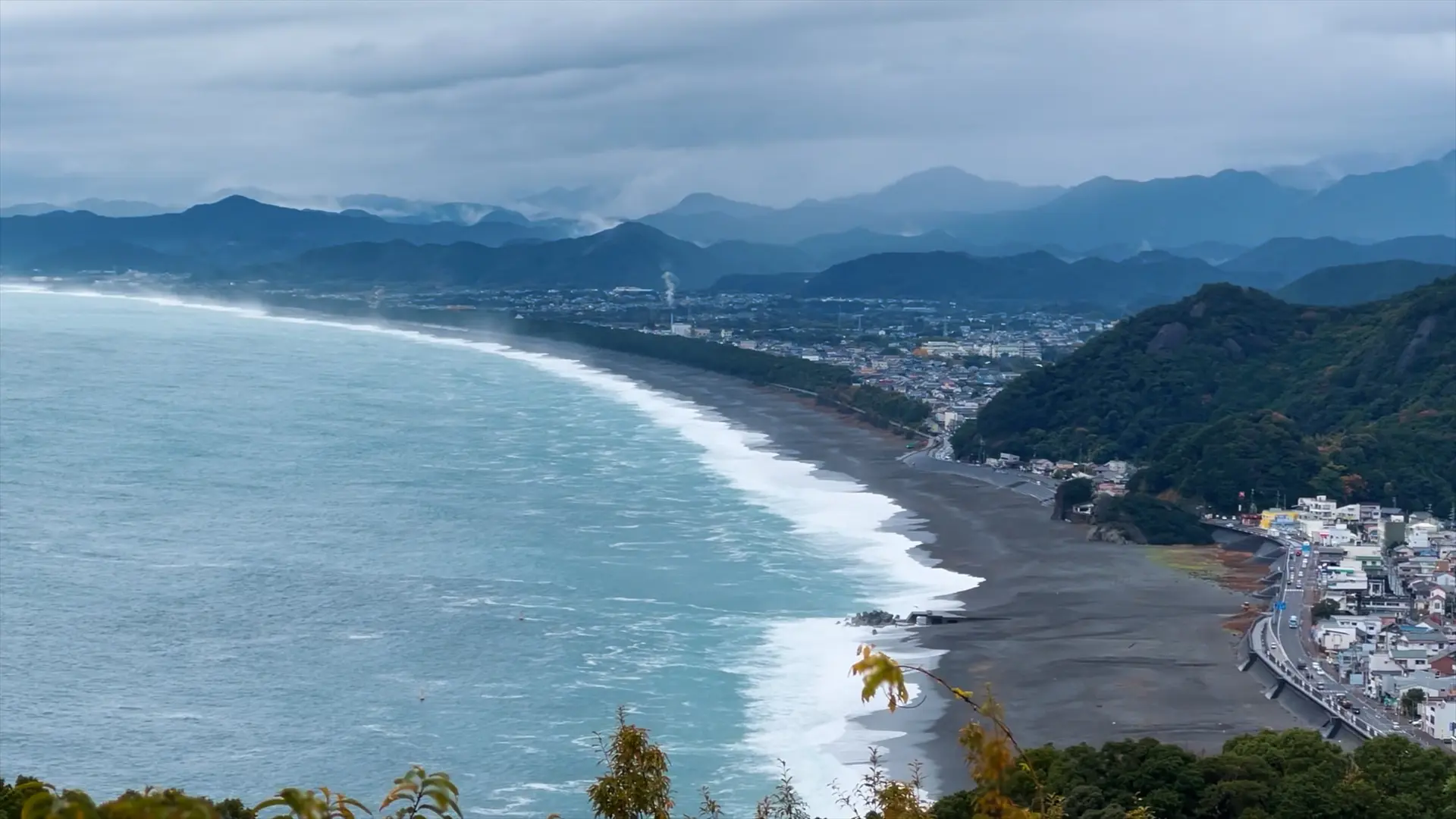
七里御浜海岸は、熊野市から紀宝町まで約22キロ続く、日本一長い砂礫(されき)海岸。「日本の渚百選」「21世紀に残したい日本の自然百選」「日本の白砂青松百選」などに選ばれており、景勝地として知られています。
東屋から七里御浜を眺めると、海岸線の長さや、緩やかなカーブを描いている様をしっかり見て楽しむことができます。
↓臨場感ある360度動画はこちらから
世界遺産・鬼ヶ城
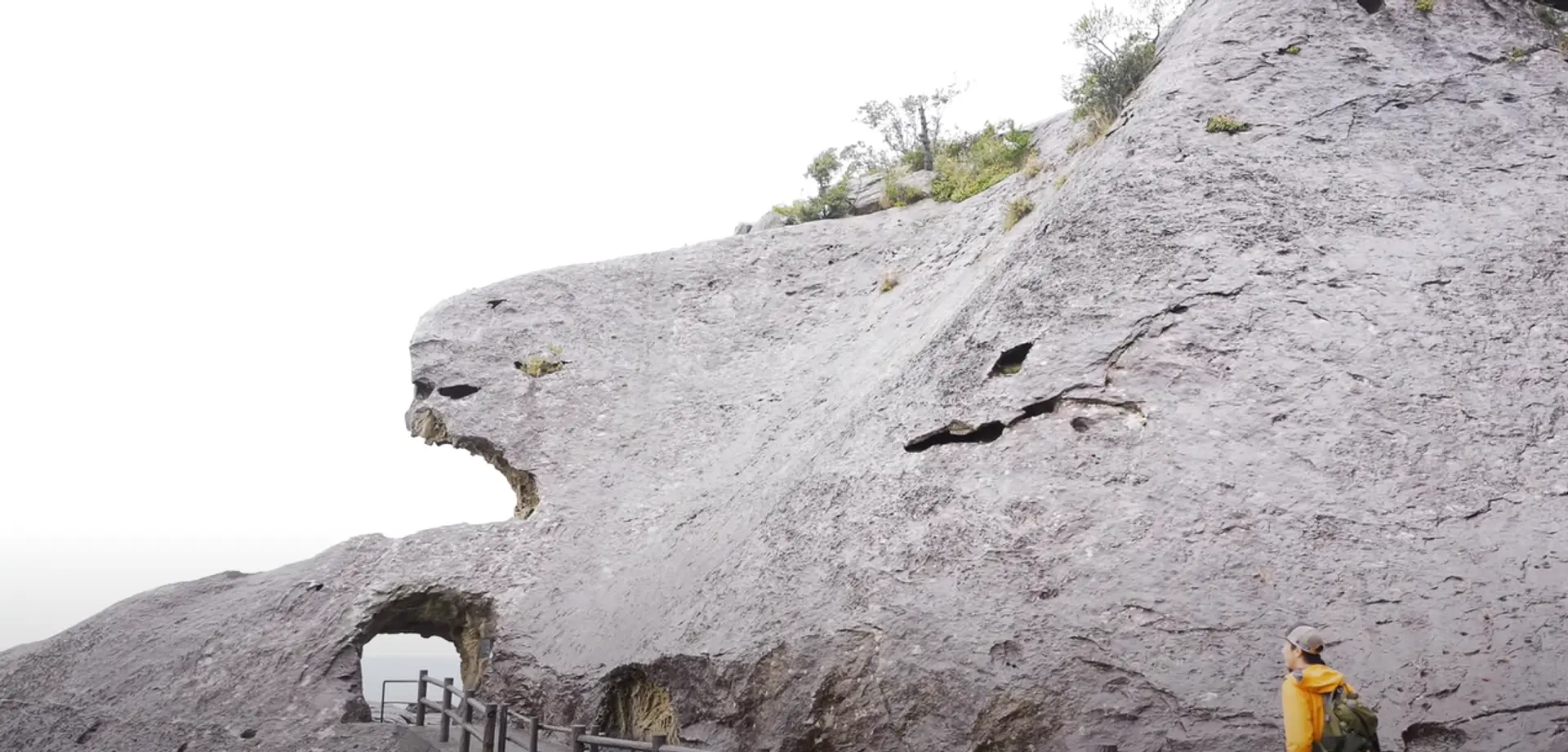
東屋から鬼ヶ城ハイキングコースを下ると、鬼ヶ城にたどり着きます。鬼ヶ城は、荒波や風雨で削られた海風蝕(かいふうしょく)や、数回の大地震により隆起した凝灰岩の大岸壁が広がる絶景スポット。1935年、国の天然記念物に指定され、2004年にはユネスコ世界遺産にも登録されました。
ダイナミックに削られた岸壁を見て、「ロールプレイングゲームの世界で見る景色みたい!」と感動する二人。
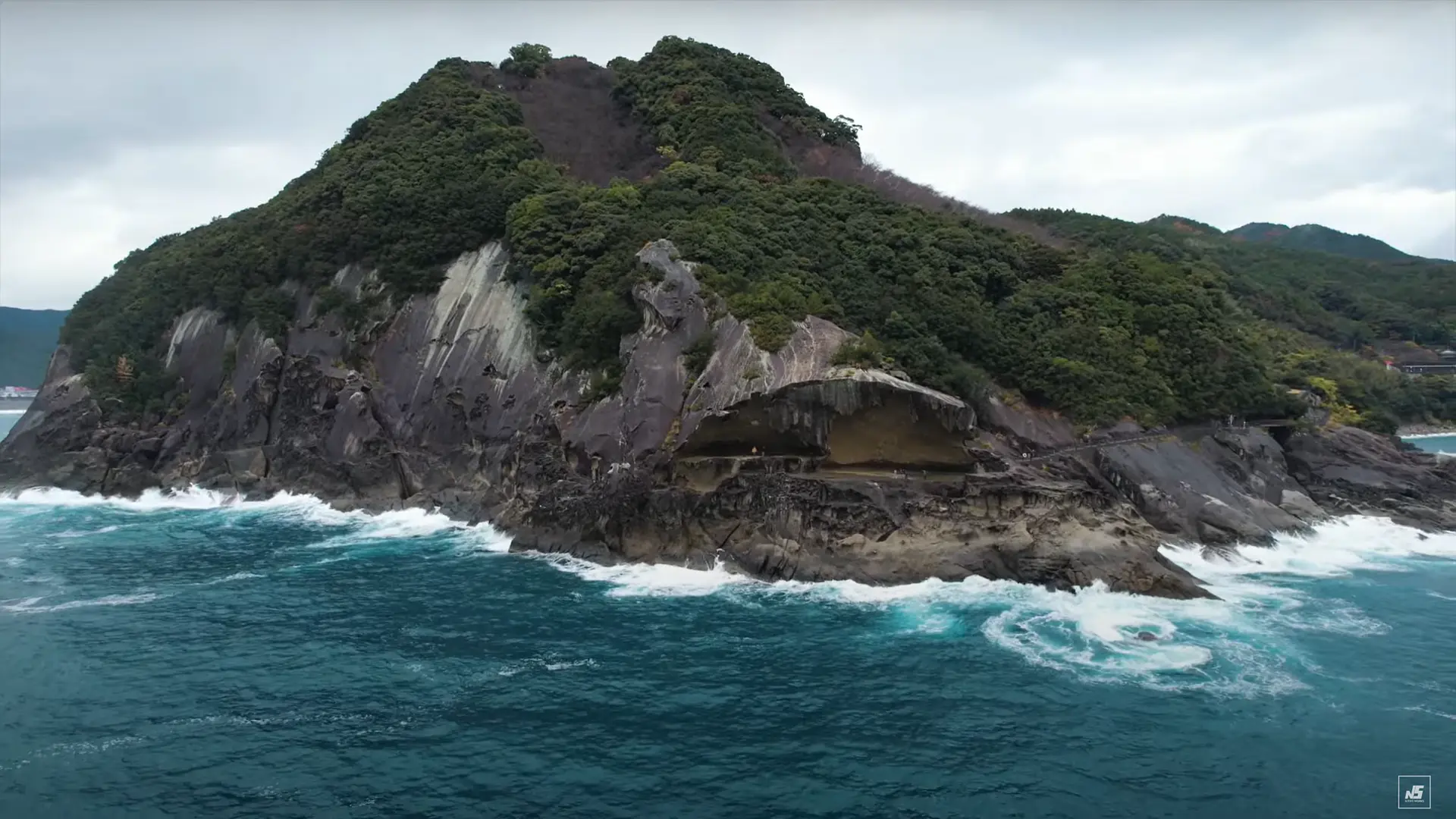
海岸線に沿って遊歩道があり、奇岩の絶景が約1キロ続きます。海側から見ると、鬼ヶ城の大岸壁の様子がよくわかります。
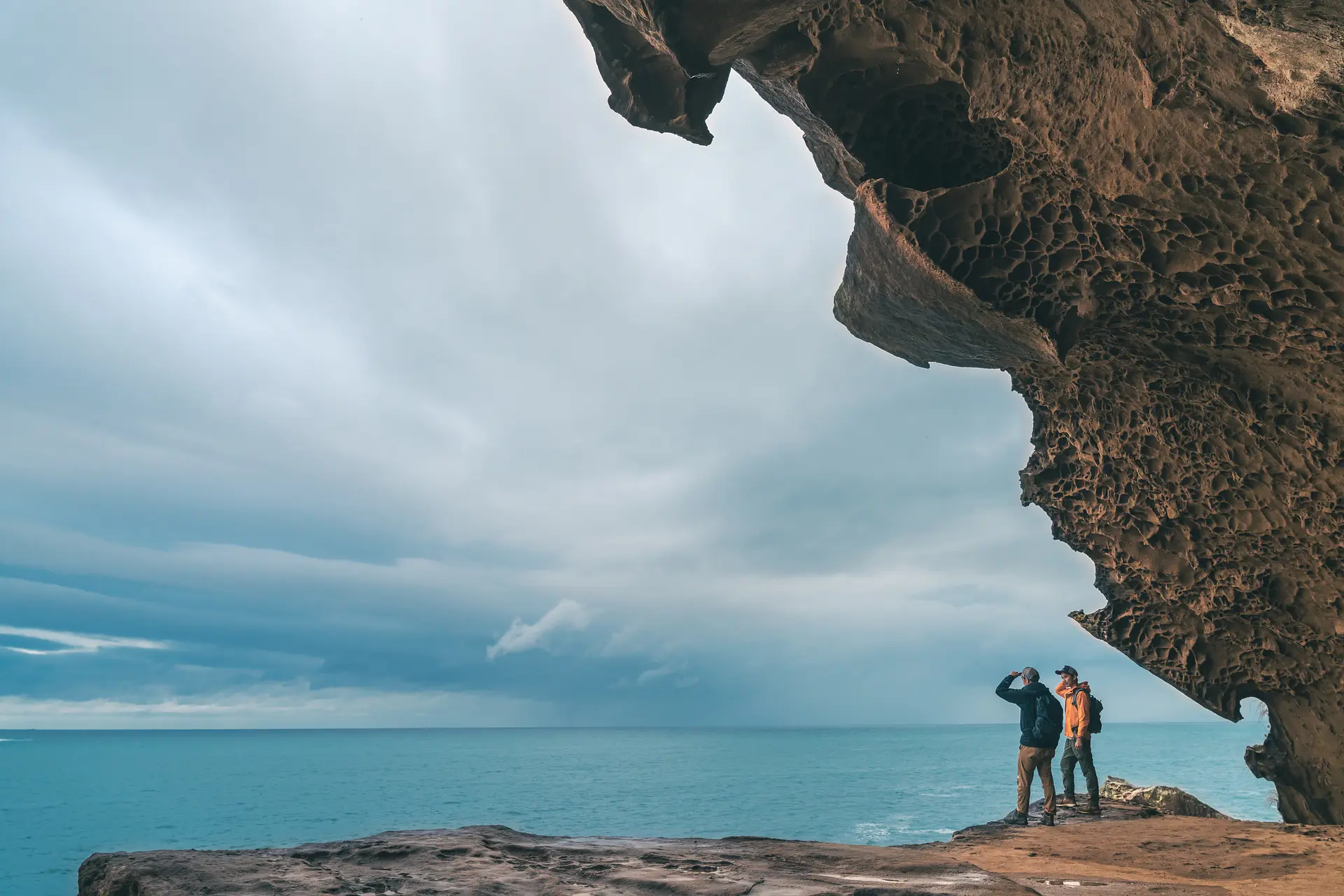
今回はゆっくり歩き、3時間ほどの散策になりました。
今回の散策を振り返る二人。
「松本峠は標高が高くないから歩きやすかった!子供が小学生になったら一緒に歩いてみたいな。絶景スポットがたくさんあるから、喜んでくれそう」「鬼ヶ城も七里御浜も、景色がダイナミックでいいね!松本峠も、雨に濡れた雰囲気が良かった」とのこと。
のりごとーさんのYouTubeチャンネルでも、今回の松本峠や七里御浜、鬼ヶ城散策を楽しむ様子が公開されていますのでぜひご覧ください!
4.温泉で、歩き疲れた体を癒そう
今回ご紹介した松本峠周辺(熊野市内)には、日帰り入浴施設がいくつかあります。熊野古道を歩いた後は温泉に浸かって歩き疲れた体を癒しましょう。
湯ノ口温泉

湯ノ口温泉は熊野杉を利用した木の良い香りが漂う温泉棟で、加水・加温一切なしの源泉かけ流しが楽しめます。
入鹿温泉 ホテル瀞流荘
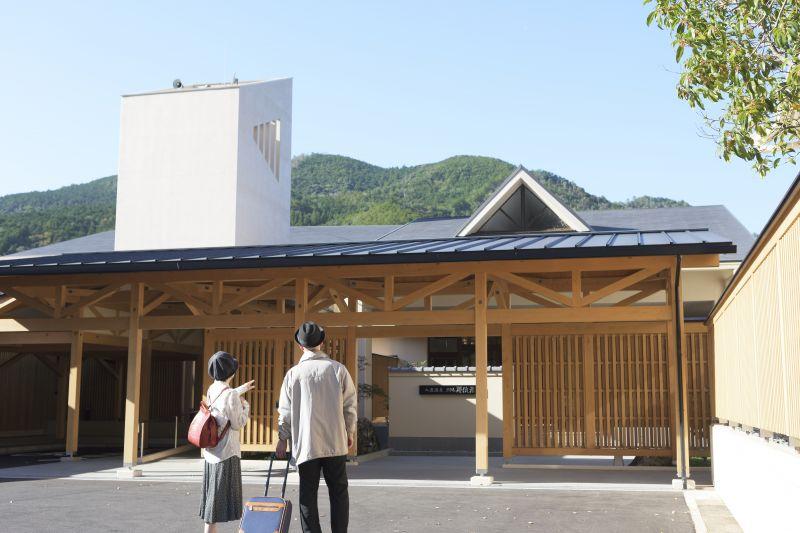
湯ノ口温泉から車で6分、またはトロッコ電車で10分の距離にある「入鹿温泉 ホテル瀞流荘」もお勧め。露天風呂からは清流「北山川」の景色を楽しむことができます。
湯ノ口温泉と入鹿温泉についてさらに詳しく知りたい方はこちらのレポート記事もご覧ください。
熊野の宿 海ひかり
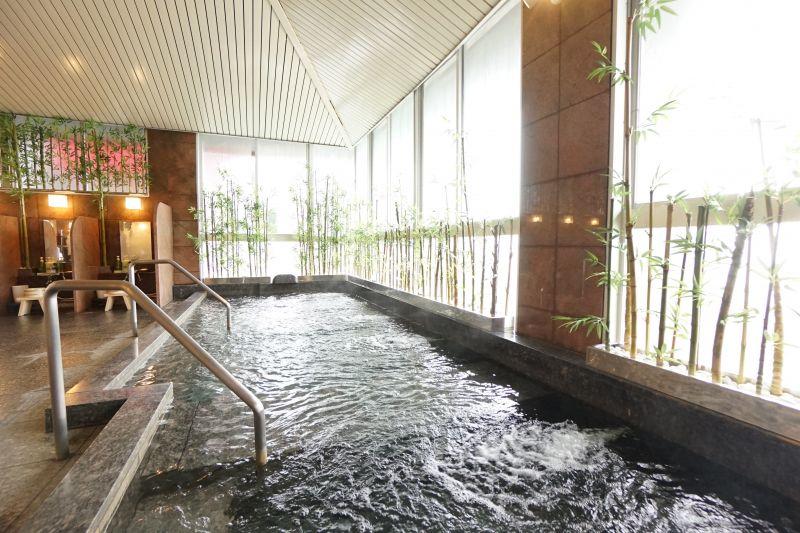
「熊野の宿 海ひかり」では、敷地から湧出する温泉を大浴場でゆったり楽しめます。
また、海ひかりには日帰り入浴者も利用できるキッズルームも併設されています。さらに詳しく知りたい方はこちらのレポート記事をご覧ください。
記事制作:MSLP

